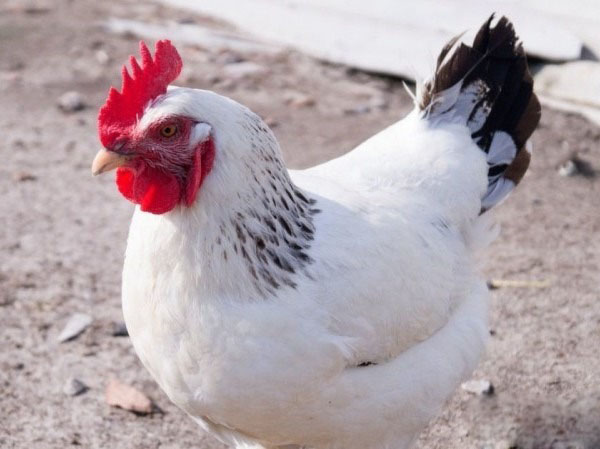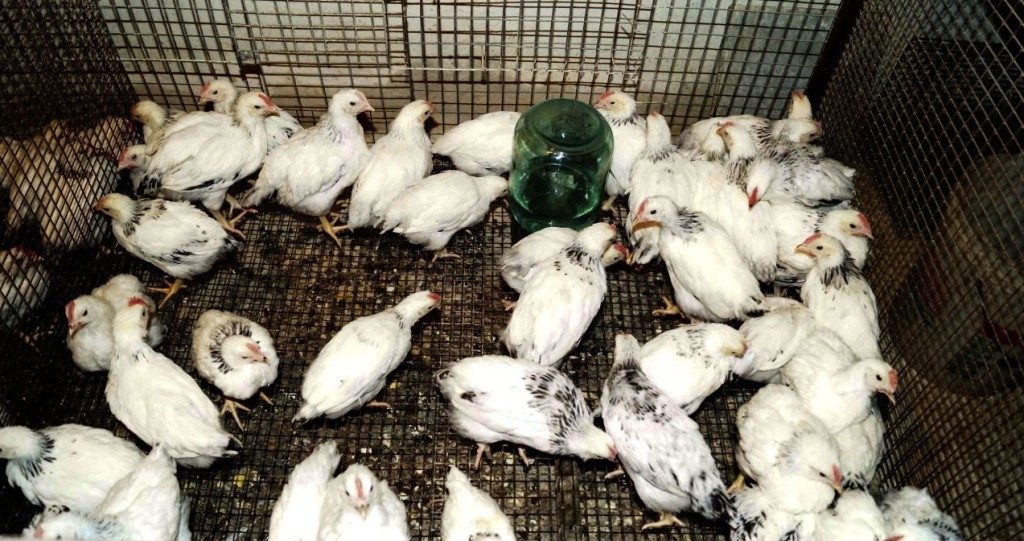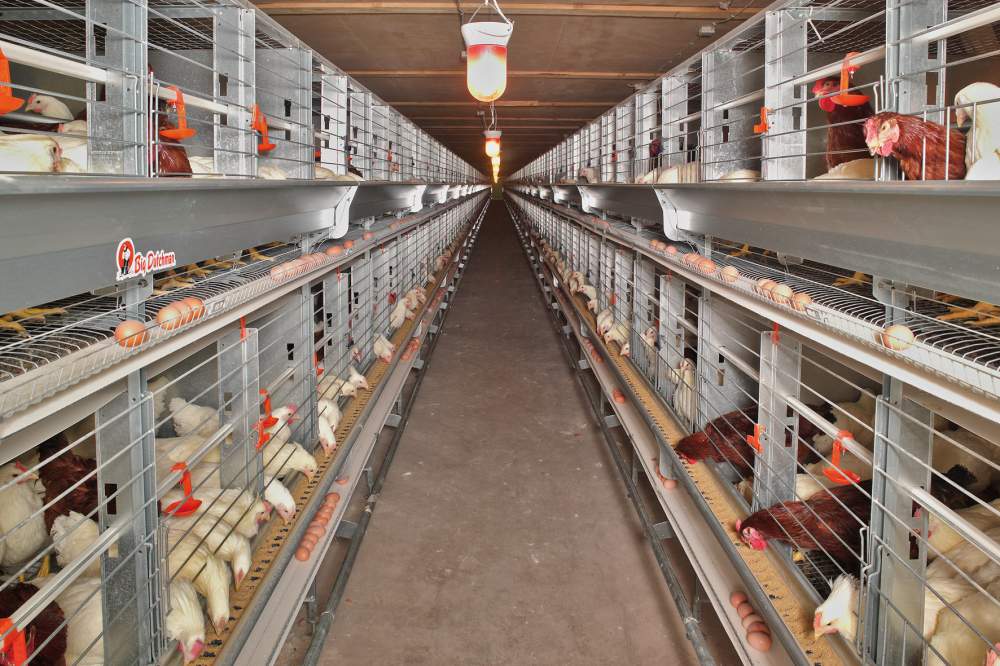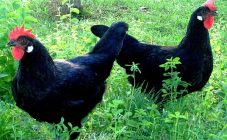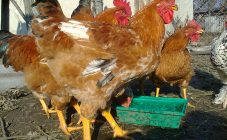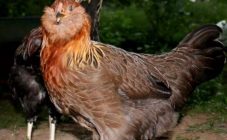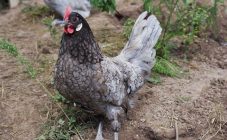Content:
The main qualities of the best breeds of chickens for home keeping are unpretentiousness, high productivity, resistance to diseases and omnivorousness. The Adler silver breed of chickens has a full set of these characteristics. This variety is artificially obtained by the efforts of breeders. What is remarkable about Adler chickens, how to feed and maintain them - more on this later.
Origin story
Adler chickens are an achievement of Russian breeders who have been developing this variety for 10 years. The birthplace of the breed is the Adler poultry farm, located in the city of Sochi. Initially, the goal of the breeders was to create a domestic alternative to highly productive foreign meat and egg breeds. Scientists coped with the task and in 1965 the Adler breed of chickens was officially recognized, moreover, poultry farmers from other countries became interested in it.
Breeders have produced a number of complex genetic combinations to obtain the result. Representatives of the following breeds were involved in the breeding process:
- May Day;
- Russian white;
- Plymouth rock white;
- Yurlovskaya vociferous;
- New Hampshire.
The most widespread Adler chickens are in the Krasnodar Territory. But more and more often they are of interest to poultry farmers from neighboring countries, as they are best adapted to the local climate.
Exterior
Outwardly, silver Adler chickens do not look like representatives of other breeds. They can be distinguished by their conformity to exterior features. A detailed description of the appearance of the Adler chickens breed:
- large oval body;
- wide, protruding hips;
- shortened back;
- convex breast;
- rounded belly;
- powerful shins;
- strong brownish-golden metatarsus;
- small head to a red crest;
- bristly pink face;
- red earlobes;
- miniature semicircular earrings;
- sharp brownish beak;
- color - silver with black feathers in the mane, wings and tail.
Roosters are not very different from females. Characteristics of the appearance of males:
- the body is wider and longer than that of a chicken;
- Long neck;
- strong yellow-golden tinge;
- black and green tail braids;
- long flight feathers of black color;
- the main plumage is hard, dense;
- the color is snow-white with a silvery sheen;
- foliate crest with deep teeth;
- drop-shaped earrings in red;
- wide protruding breast;
- slim stomach.
The body weight of cocks and hens in adulthood is also different:
- female - 2.5-2.9 kg;
- male - 3.5-3.9 kg.
Productivity
Since the Adler silver chickens represent a universal meat and egg direction, their productivity is assessed in these 2 categories. Egg production facts:
- start of laying at 5.5-6 months;
- the annual rate is 180-200 eggs;
- the average egg weight is 58-62 g;
- productive period up to 3 years.
In addition to egg-laying potential, silver chickens are an excellent source of tender, lean meat. Due to the relatively low consumption of feed, keeping these chickens is economically profitable.
Reproduction
Obtaining offspring is a responsible task, but a beginner in the poultry business can also cope with it. Everything you need to know about breeding:
- Parent stock formation - the best individuals are selected from the entire livestock.
- Preparing hatching eggs - the largest specimens are selected, stored at a temperature of 10-15 degrees and a humidity of 55-60% for no longer than 6 days.
- After collecting a sufficient number of eggs, you can put them in an incubator or under the hen.
Silverling hens do not have a very pronounced brooding instinct, so you should not attract them as hens. Eggs can be placed under broods of other breeds or even species (eg turkey).
Silver Adler chicks hatch 20-22 days after the start of incubation. Growing and care requirements are standard. Step by step:
- prepare a box for relocation in advance;
- cover dry bedding;
- maintain the air temperature within 28-30 degrees;
- populate chicks that have dried out under a hen or in an incubator;
- gradually reduce the air temperature by 2-3 degrees;
- vaccinate chicks in a timely manner;
- disinfect dishes daily;
- monitor the dryness of the litter;
- gradually accustom to fresh air, daily increasing the time of walks.
You need to start feeding the chickens 6 hours after they hatch. First, a fresh boiled egg with the addition of semolina or finely ground corn is served in the feeder. Then they gradually expand the menu, introducing new components: herbs, vegetables, fermented milk products, baker's yeast.
The peculiarity of the Adler chickens is that they fledge for a long time. The change of the original cannon to an adult one, capable of protecting plumage from cold weather, is slower than that of representatives of other breeds. Therefore, the poultry farmer needs to maintain a comfortable microclimate in the chicks' dwelling longer in order to avoid morbidity due to hypothermia.
Content
An adult flock is kept in a spacious poultry house; it is permissible to install low, single-level perches. Adler layers adapt to any climatic conditions, but they do not tolerate long-term exposure at sub-zero temperatures. Therefore, in order to avoid mass morbidity and mortality in winter, it is necessary to provide comfortable living conditions. How can the optimum air temperature in the house be maintained without heating:
- Insulate the walls in autumn - close all cracks, cover the walls of the house from the inside or outside with insulating material.
- Close the entrance for the winterusing only a small hole so that the room does not lose heat.
- Install multi-layer deep bedding... The vital processes of the microflora in it will provide an additional 2-3 degrees of heat in the chicken coop.
In the summer season, chickens are free-range. The yard is equipped with feeders, drinkers, boxes with ash-sand mixture.
To maintain the egg production of the herd in winter, it is necessary to artificially extend the daylight hours to 12-14 hours, but no more, otherwise the risk of depletion in chickens and weakening of immunity increases.
Feeding
The diet of meat and egg chickens is an area of increased responsibility of the poultry farmer. How quickly the chickens grow and how actively they can lay depends directly on the balance in the diet. How to feed silver chickens - an approximate daily ration, based on the needs of birds, is presented in the table.
| The product's name | Quantity, g |
|---|---|
| Compound feed with increased protein concentration | 40 |
| Fresh herbs | 20-30 |
| Crushed grain | 50 |
| Whole grain | 40-45 |
| Salt | 0,5-0,7 |
| Wheat bran | 8-10 |
| Soybean meal | 10-12 |
| Meat and bone meal | 10-12 |
| Yeast | 3-5 |
| a piece of chalk | 4-5 |
Home-made feed is no worse than industrial compound feed. Birds gladly absorb wet mash and porridge on skim milk, meat and fish broth. But it is imperative to maintain a balanced diet and daily cereal supply.
Disease prevention
The birds of the breed in question have strong immunity. There are no specific diseases to which they are prone. But without effective and timely prevention, health problems are possible for the entire herd. Survival rates:
- 93-95% in young animals;
- 87-90% in mature individuals.
Every poultry farmer can change these values for the better. It is necessary to learn several rules of prevention and adhere to them unswervingly.
- Regularly carry out the destruction of parasites and rodents carrying dangerous infections.
- Provide effective hygiene care.
- Control the humidity in the house. Damp air is an ideal environment for the development of pathogenic bacteria and microorganisms that affect the respiratory system.
- Timely identify and isolate sick or weakened birds.
- Monitor the freshness and quality of the products supplied to the trough.
- Disinfect drinkers and feeders regularly.
- During the period of seasonal molting, enhance the diet with vitamin and mineral supplements.
Protection against diseases by vaccination does not always give one hundred percent result without observing the above rules.
Advantages and disadvantages
Summing up, the main disadvantages and advantages of the Adler silver chicken breed should be highlighted. Its main advantages:
- high productivity in two directions;
- winter hardiness;
- unpretentiousness;
- peaceful character;
- high survival rate.
In addition to the pros, you should take into account the disadvantages that are not significant, but require a special approach to the content. Cons of the breed:
- weakened incubation instinct;
- chickens fledge slowly.
It is easy to compensate for minor disadvantages with increased care of chicks during the plumage change period and the use of incubators for breeding. In other respects, the bird is great for households and even for large farms.
